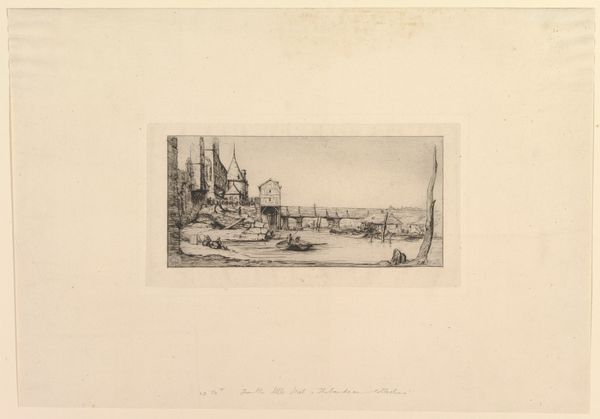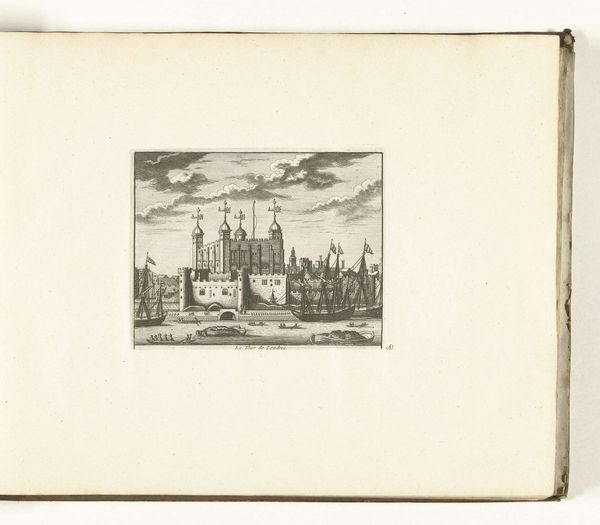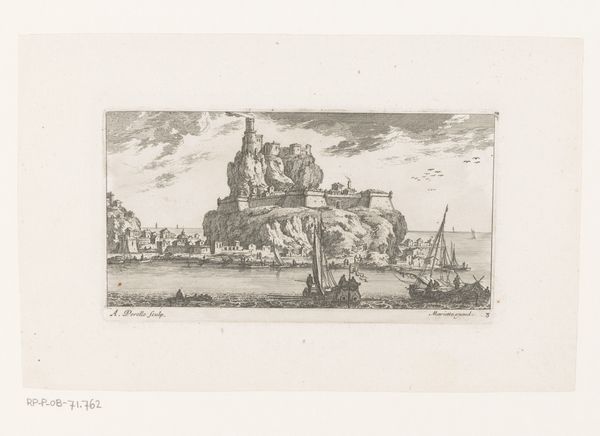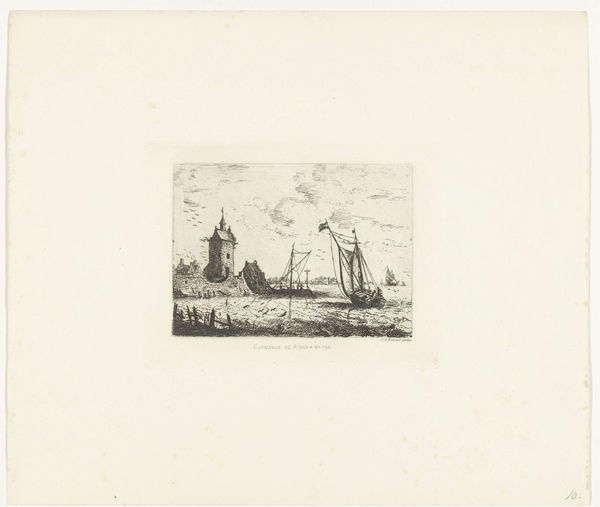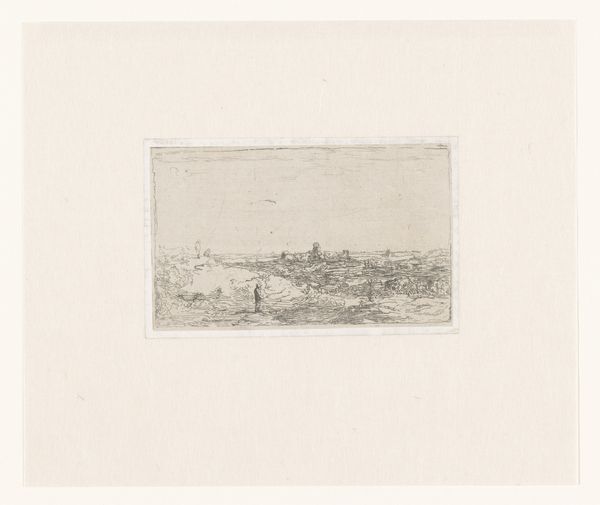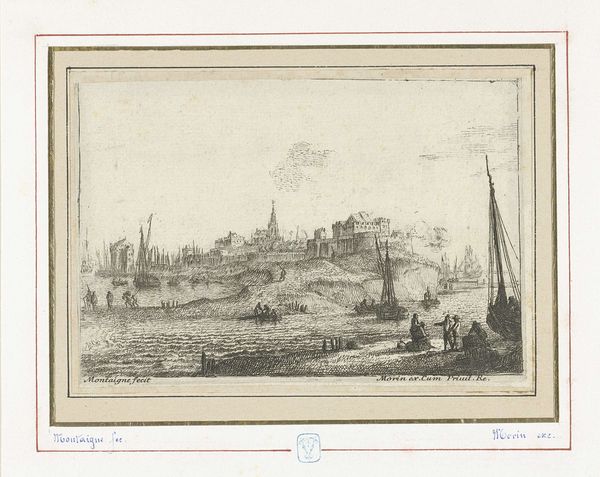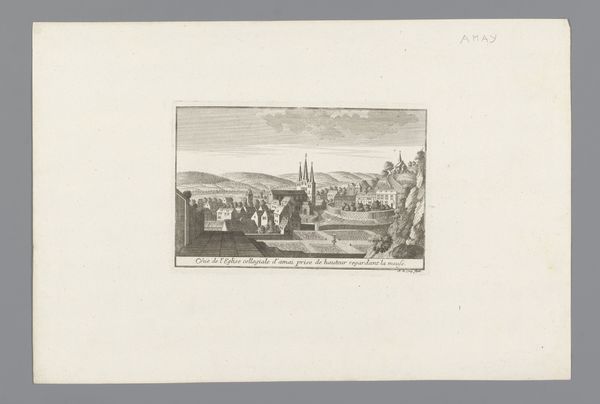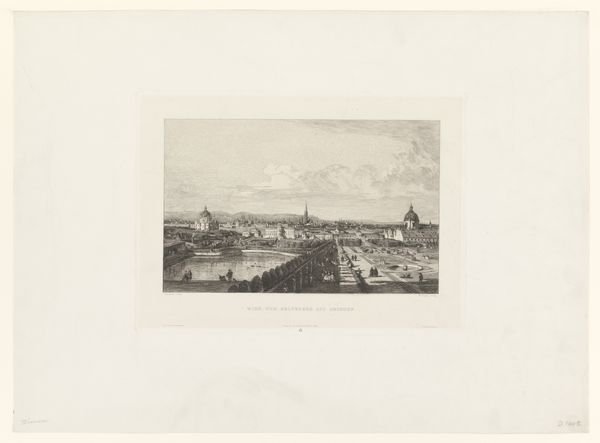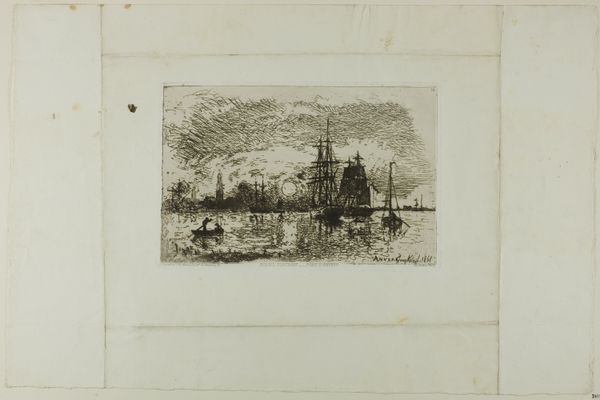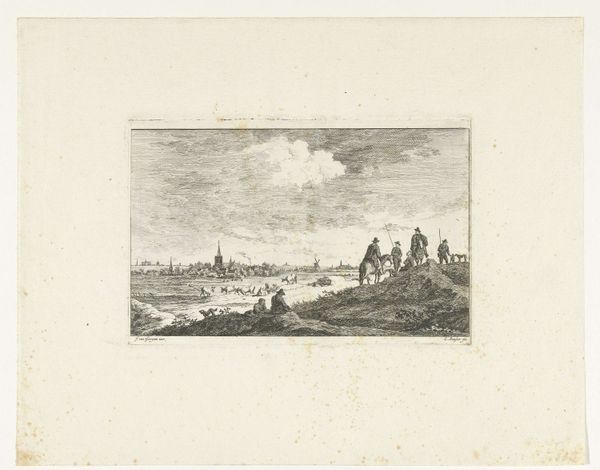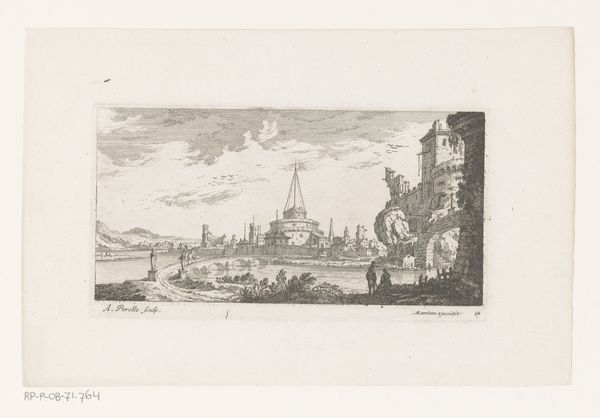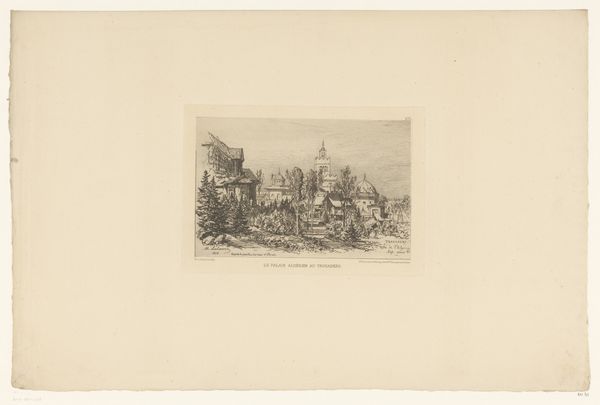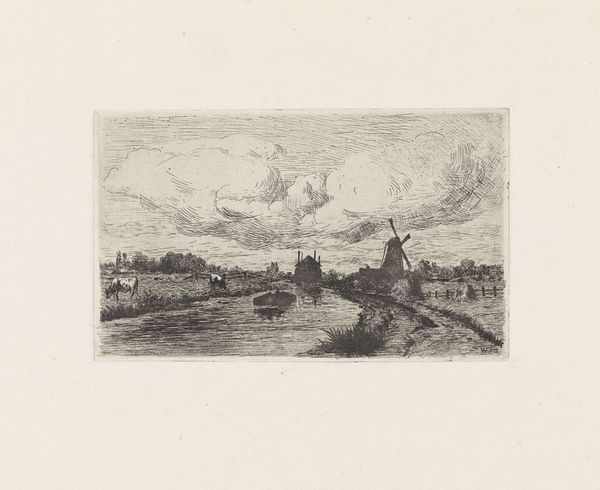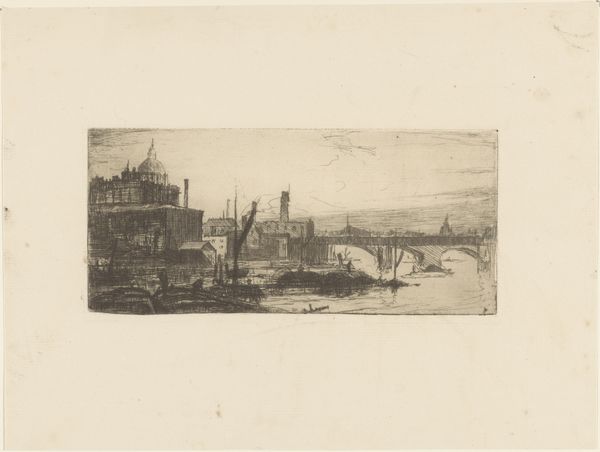
print, etching
#
comic strip sketch
# print
#
pen sketch
#
etching
#
old engraving style
#
landscape
#
personal sketchbook
#
ink drawing experimentation
#
romanticism
#
pen-ink sketch
#
pen work
#
sketchbook drawing
#
storyboard and sketchbook work
#
sketchbook art
#
realism
Dimensions: height 85 mm, width 115 mm
Copyright: Rijks Museum: Open Domain
Curator: Albertus Brondgeest's etching, "Landscape with Mill and Ship in Harbor," made sometime between 1796 and 1849, presents a tranquil scene of industry and nature coexisting. Editor: The density of the lines, the crosshatching – it creates a fascinating texture, almost like a woven tapestry, but also a subdued mood. What strikes you most about it? Curator: Well, this particular image speaks to a crucial moment in Dutch history. The late 18th and early 19th centuries were a period of political and economic upheaval, with the Batavian Republic and later the Kingdom of Holland seeking to redefine Dutch identity amidst European power struggles. Editor: I see that the artist uses light and shadow to draw your eye through the piece: the dark, looming mill on the left, leading to the slightly brighter, bustling harbor scene. Curator: Exactly! The juxtaposition isn't accidental. Windmills, historically vital to the Dutch economy for grinding grain and powering industry, faced competition as steam power rose, changing the landscape—literally and figuratively. Editor: So the placement suggests a dialogue between the traditional and the modern? Curator: Precisely. Then consider the ship: maritime trade defined the Netherlands for centuries, creating wealth and shaping its global presence. Yet, that dominance was waning. Editor: There's a sort of tension embedded in what seems like a simple, calm scene. I'm also captivated by the composition – how the structures and land seem to rise and then drop, following the line of the horizon… Curator: Think too about who had access to these scenes and the political ramifications of land use; even pastoral scenes are political! This wasn't a world equally accessible to all, even though we might see universality represented here. Editor: Right. And maybe seeing the hand of the artist in the very obvious marks and hatches lends authenticity? You are right—there’s definitely an elegiac tone underlying it all. Brondgeest uses line to capture a specific moment weighed down by change, doesn't he? Curator: Indeed, the beauty, but also the shifting sands beneath. It is, for me, the mark of a moment caught, a narrative inscribed. Editor: It’s always rewarding to see how those stories reveal themselves through thoughtful looking.
Comments
No comments
Be the first to comment and join the conversation on the ultimate creative platform.
